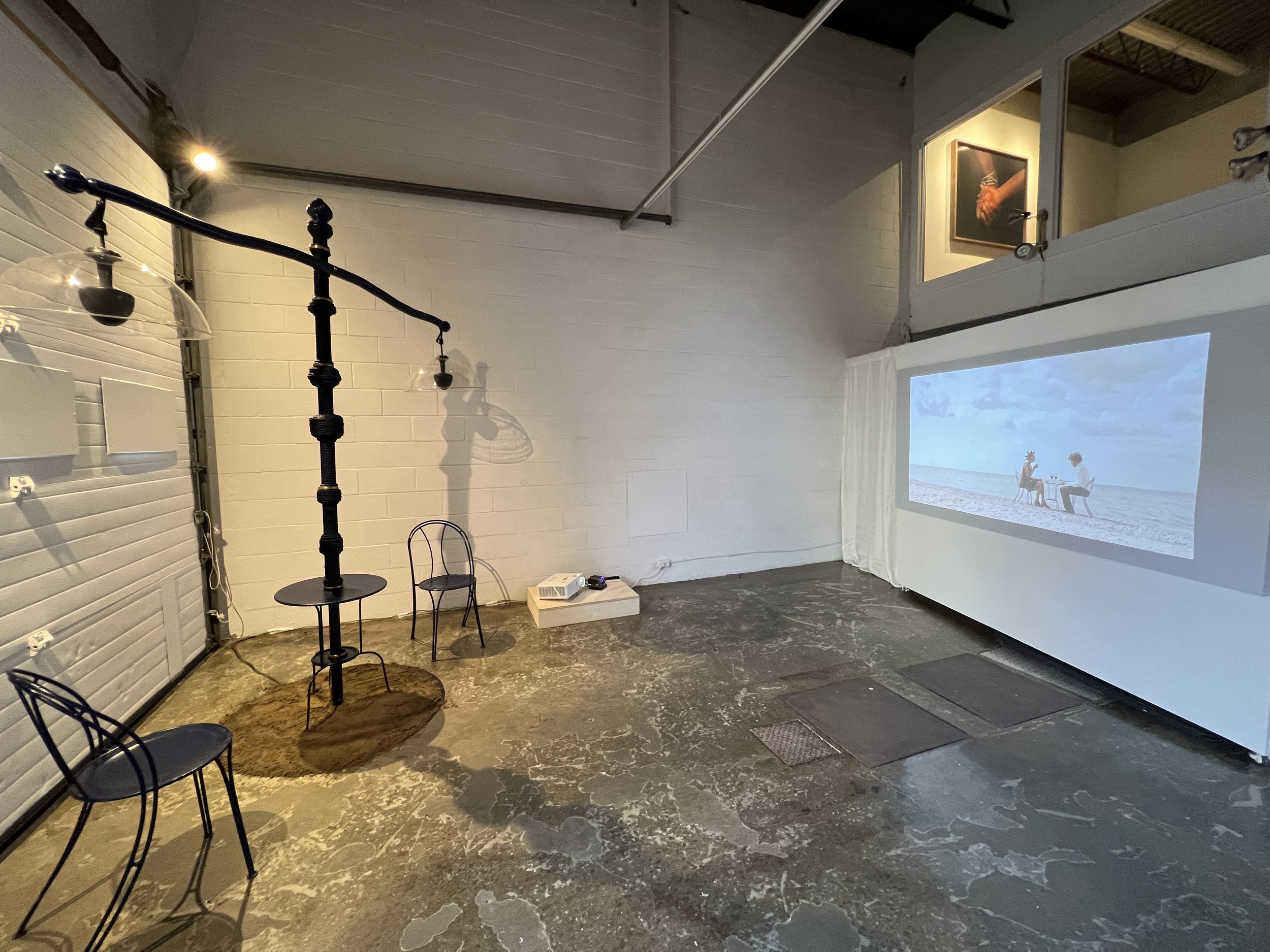Camal & Camille
Camal Pirbhai and Camille Turner have created collaborative artworks since 2011.
The inspiration for much of their work is exposing hidden histories and discussing who is visible and who is not visible from a Canadian History perspective.
The Duo have drawn from forgotten archives to view histories with a contemporary lens.
The Wanted series confronts the forgotten history of Canadian enslavement of Black and Indigenous people by transforming detailed descriptions of enslaved people posted in advertisements by Canadian slaveholders into photographs that depict freedom seekers imagining and enacting liberty.
Selected Available Works
Ascendant
Lenticular photograph 48 X 42, 2023. $25000
This lenticular photograph honours the memory of Sophia Burthen (Pooley). Sophia was born enslaved in Fishkill, New York around 1775. When she was 7 years old she and her sister were stolen from her family, ferried across the Hudson River in the dark hold of a boat then sold in Upper Canada. For decades she laboured in the Ancaster, Dundas, Hamilton area then took her freedom in around and lived in her elder years in the Queen’s Bush, a Black community in Peel county. The two hands in the photo represent Sophia at the moment her childhood was stolen, then as an elder recounting her journey. The hands appear and disappear, meeting to touch, remembering the tale of her survival and mourning the loss of her sister and family who disappear from the public records and from her testimony.
Bell, from the Wanted series, 2011-2018
Camal & Camille
68” X 47” edition of 3 colour photograph on vinyl, light box
Wanted draws from detailed descriptions found in advertisements posted by Canadian slaveholders in early newspapers. Rather than portraying these freedom seekers in the past where their lives are constrained by the violence and inhumanity of institutionalized bondage, we presented them in the future space of possibility they dreamed about as they set off on their journey to freedom. At first glance, the photos appear to be fashion photos but the text on the images is taken from the old newspaper ads displayed with them.
Rocks 2, from the Rocks series, 2021
Camal & Camille
38’ x 26”, Black and white photographs, light box, edition of 3
Rocks are the record keepers and storytellers of the earth. By attuning our beings to the stillness of rocks, we hear the stories they contain.
In the 18th-century slave ships were constructed along the Atlantic coast in what is now Canada. They were ballasted with rocks from the area’s shoreline. When the ships sailed to West Africa the rocks were dumped onto the shore and humans, their intended cargo, were loaded into the stifling cargo holds. The ships have dissolved into the sea and the people in their holds are no more, but the rocks have not forgotten.
Untitled 5, 24 X 12 from the Family Matters series, 2017
Family Matters, video installation and video stills.
Family Matters installation view
This series was inspired by an advertisement posted in the Upper Canada Gazette in February 1806 by Peter Russell, an administrator in Upper Canada, offering Peggy Pompadour and her son Jupiter for sale. The mother and son are two of the enslaved people that Russell legally claimed as his property. In Family Matters Peggy and Jupiter travel through time to visit contemporary Toronto, where their plight illuminates the ongoing co-constitution of past and present. Like the earlier series Wanted (2016), Family Matters humanizes the enslaved people described in historical advertisements by challenging linear constructions of history—opening the past to unexpected futures.
House of Bâby, 2021
Camal & Camille
Lenticular Print installation, 28 feet x 16 feet
House of Bâby is a portrait of eighteen Black and Indigenous people who were enslaved by the Bâby family of Toronto, Windsor, and Detroit. Although their unpaid labour produced great wealth for the family, they were recognized only as property and were unacknowledged in official historical narratives.
Camal Pirbhai and Camille Turner brought this group to life by representing them amongst the everyday bustling crowd of this country’s busiest hub. Union Station’s majestic architecture symbolizes stability and civic pride, but it is the people who are responsible for its strength.






